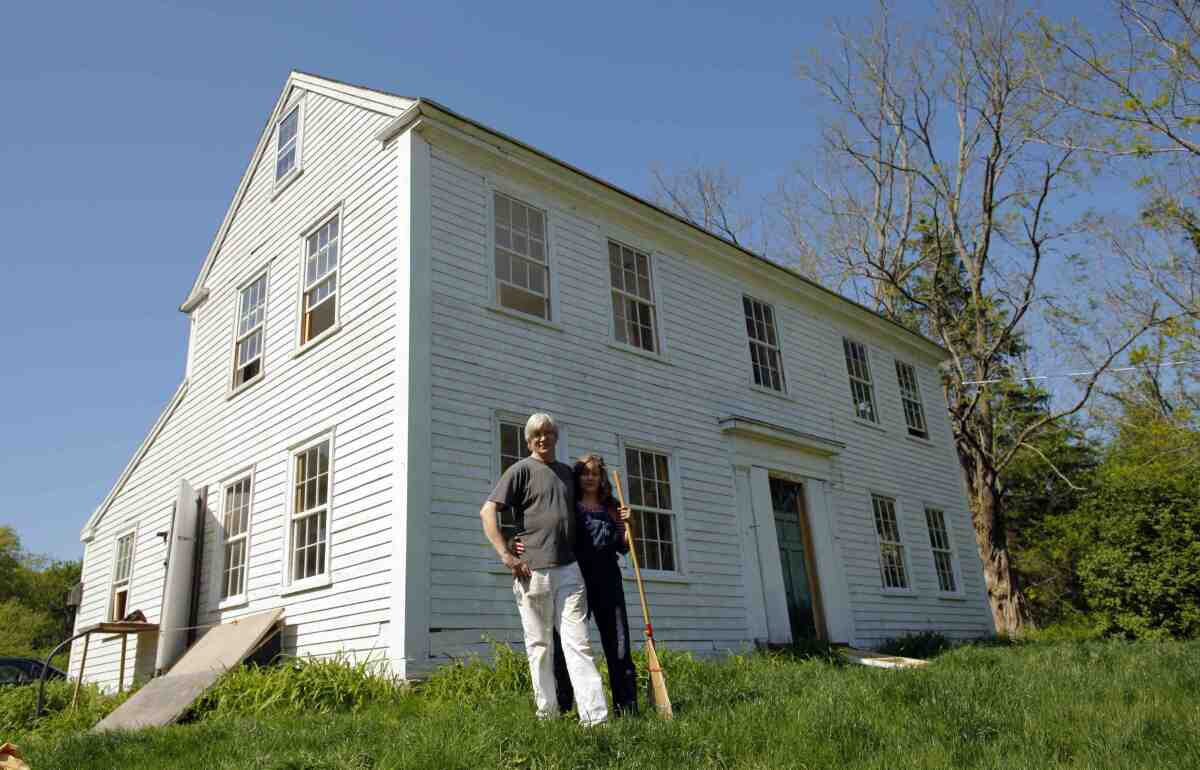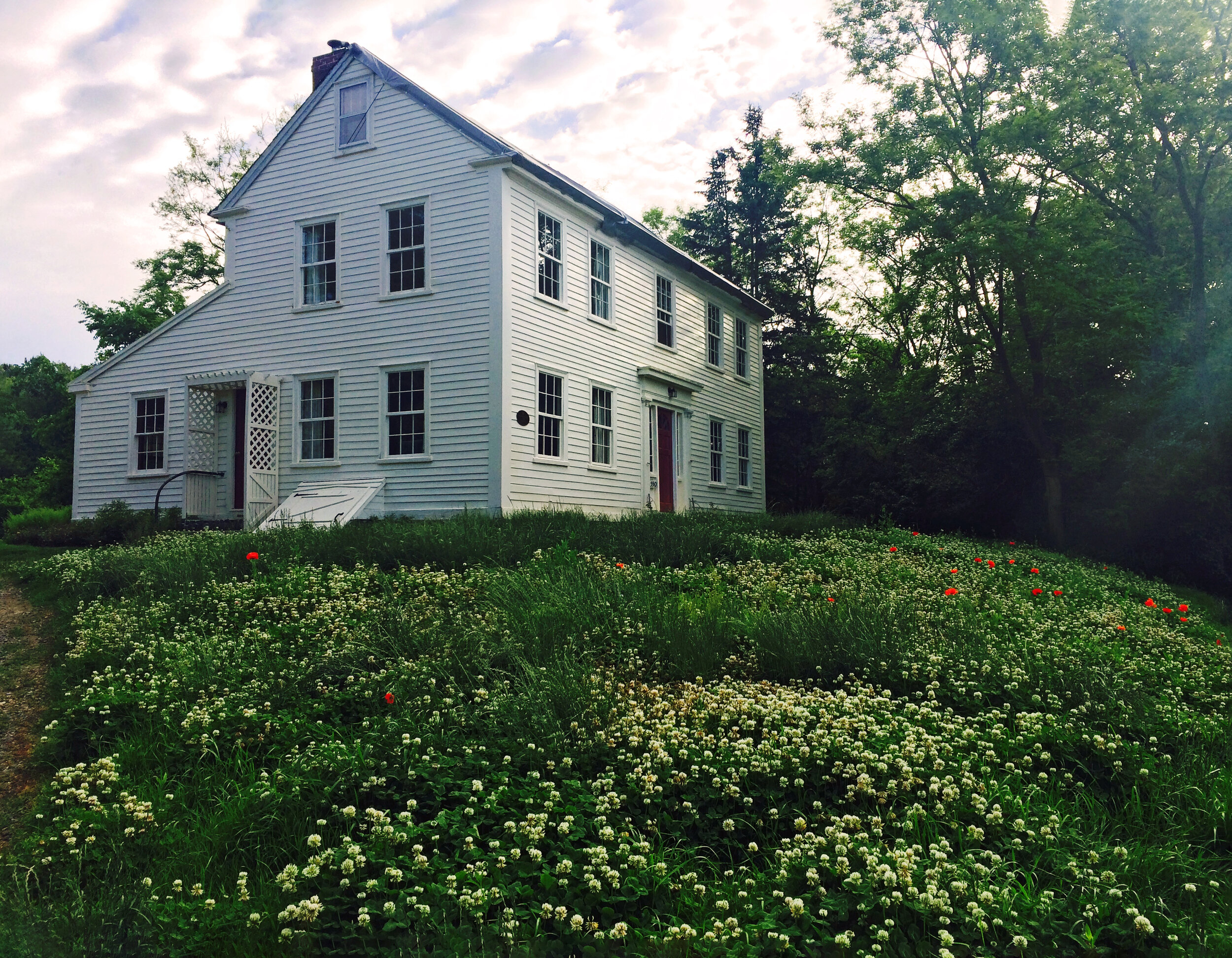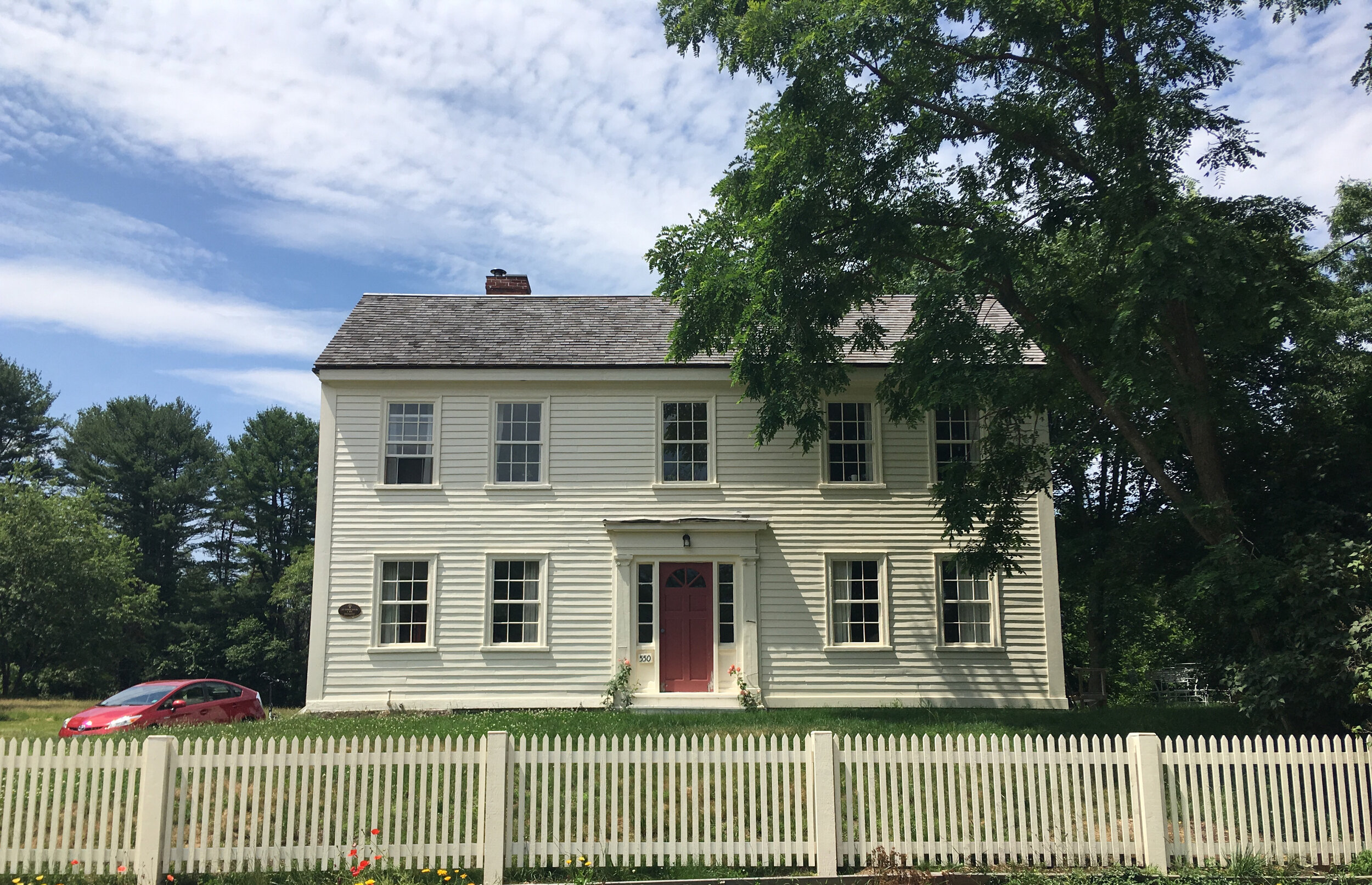Our Story
We came to roost in Dodge House after a four-year quest that began when a friend sent us this New York Times story about resident curatorships:
“Nothing Down, $0 a Month, Hammer Required.”
We felt a calling when we read that a handful of states offered free, long-term leases on historic properties in exchange for the time and money it took to fix them up. No one we knew had heard of the concept, but our friends agreed it sounded like a lucky break for us.
We’d been trolling around for a fixer-upper to buy within an hour of New York, and we’d already proven a knack for spotting cheap rentals with good old bones, sprucing them up for a song, and living happily with low overhead one stop from Manhattan, in Jersey City. Why not spend a couple years’ worth of rent to fix up a house in a gorgeous setting and earn the right to live there for the next quarter century? Even if we’d never own the place, it seemed like an irresistible deal, given that we had the skills to perform the work ourselves.
The nearest programs were in Massachusetts and Maryland, so that fall I blitzkrieged state and regional historic boards and preservation councils throughout New York and New Jersey, to see if either state had plans for a program, close to my job as an editor for Frommer’s travel guides, and my husband’s as an exhibition specialist for the Cooper-Hewitt National Design Museum. We learned—a few months, false leads, and dead ends later—that NY had nothing in the works, and NJ wanted a program but needed to pass the legislation. So we put our names at the top of the Garden State’s waiting list and kept on dreaming.
Rich Harbour: The Bay State
In May 2008, we realized that Massachusetts had the motherlode of abandoned properties in state parks, and one of the nation’s oldest resident curator programs, run by the Department of Conservation & Recreation since 1994. The DCR had scores of historic houses in need of TLC throughout the state.
Through friends who grew up on Cape Ann, we had come to know and love the upper North Shore and decided to investigate four properties in the Northeast Region early that fall. No open houses were scheduled, so we pored over state park maps and set out on a weekend-long treasure hunt, which proved that only one place seemed within our means and geographic bounds: Lamson House, in Bradley Palmer State Park, Topsfield. Later that fall, we attended the public inspection and thought the place was extraordinary, with beehive ovens, a two-story atrium overlooking the Ipswich River, and a wing that dated to 1680. But it was too sprawling for the two of us, my husband didn’t fit under the doors, and the future curators, who were also there that day, looked like the shoo-ins they proved to be.
As we prepared to head home dejected, the DCR Resident Curator Program Manager, Kevin Allen, who had been patiently fielding inquiries from me for six months, told us about a two-bedroom property across the park. It wouldn’t be up for inspection for a while, but it sounded like a better fit for a couple without kids and with much more vision and patience than money. At his suggestion, we crossed the park and were tickled to come upon a modest, white clapboard farmhouse facing south on a grassy knoll between two blind curves on a winding country road. We were smitten.
Getting Into Dodge House
A year and a half went by before we received an email in March 2010 announcing the public inspection of the place, called the Elbridge Francis Dodge House, in the town of Hamilton. We dropped everything to attend. Boarded windows made it tricky to read the unlit interiors, but our flashlight revealed a structure that looked remarkably intact—no doubt due to its hilltop perch, which had kept it high and dry for two centuries. The house itself wasn’t grand like some others in the program, but we knew it would be a jewel box once the boards came off the windows—all 26 of them, with nine of them facing south. We also saw great potential to mix old and new gracefully within the clean, pre-Victorian interiors. The plum location sealed our interest.
We returned home and pulled out all the stops to complete the lengthy application, including a plan for the restoration, due April 30, 2010. That summer, we couldn’t believe our good fortune when the DCR invited us to interview as finalists. Being from out of state, we felt like long shots, but we loved the region, we wanted to restore this beautiful little house more than anything, and we knew we would do it justice.
On August 24, 2010, Kevin Allen called to offer us the place. We said yes on the spot, and we’re still pinching ourselves.
Just as we waited 18 months for the open house, we waited more than a year to work out the details of the lease and to wait out the state’s execution of the lead and asbestos removal and other groundwork that spared us some big-ticket expenses. Our pre-construction timeline chronicles the obstacles we’ve faced since we verbally agreed to take on this project—from tough state inspection requirements and stubborn old lead paint to an elusive septic pit, a case of Lyme Disease, and a septic tank with a giant crack in it, signaling the need for a replacement (Septic Bunker). Those 433 days were a small price to pay for what feels like a new lease on life—for us and for our house, which had sat abandoned for a decade before we commited to fix it up.
More than 30 unique properties in Massachusetts still await the attention of live-in caretakers, including a Victorian schooner that broke wooden maritime records by sailing within 600 miles of the North Pole while on a research exedition for the Smithsonian. We hope to raise awareness about resident curatorships on a national level, so that more state governments across the country will give people the chance to build a home while resuscitating historic properties that would succumb to disrepair without their intervention.
Pre-Construction Timeline
Being a resident curator requires not only money and elbow grease, but time, patience, resolve, and flexibility. For the benefit of anyone who would seriously like to become a resident curator, we have constructed this timeline detailing the level of paperwork and labor the state must perform before the curator picks up a nail or a hammer to get started. For a chronicle of our adventure since we cleared all bureaucratic hurdles and got to work, in late 2011, see our blog.
10/2007
We read about resident curator programs in the New York Times.
10/2007
I write to historic boards and preservation councils throughout NY and NJ to see if either state is planning a resident curator program. Nothing’s happening on either front.
5/2008
I learn of Massachusetts’ program, the nation’s most active, with scores of available properties, run by the MA Department of Conservation & Recreation.
11/2008
We attend the public inspection of Lamson House, in Bradley Palmer State Park, Topsfield, MA, and learn of Dodge House (our future home, then known as Kerighan House), at the south entrance to the park in Hamilton.
3/2010
We attend the public inspection of Dodge House.
4/30/2010
We submit our application to be resident curators of Dodge House.
7/28/2010
As finalists, we interview in Bradley Palmer State Park with members of the Department of Conservation & Recreation.
8/2010
MA DCR Historic Curatorship Program Manager Kevin Allen calls to invite us to be resident curators of Dodge House. We accept on the spot. Before we can start work, however, the state needs to prepare the lease; establish the bounds of the property; and remove lead, asbestos, and other hazardous substances from the exterior and interior. Once the state finishes its work, we will need to secure a certificate of occupancy before we can inhabit the house. That is to say we need heat, running water, electricity, a functioning kitchen and bathroom, and habitably clean rooms.
10/6/10
The state issues a rudimentary draft of our lease, for our lawyer’s initial review.
11/2/2010
We drive to Dodge House for a meeting with the state building, electric, and plumbing inspectors to plot the fastest route to a Certificate of Occupancy. One of the inspectors never arrives, but we meet members of the DCR for the first time, including our park supervisor, Richard Scott, and establish the bounds of the 1 1/3-acre property. We also learn that the state has completed the asbestos removal and will soon begin the lead abatement.
11/19/2010
We meet with the state building inspector and learn that state-licensed plumbers and electricians must perform all the work on the house. We’d been planning to do this costly work ourselves, so this surprise is a possible deal-breaker for us. Plans stall.
1/2011
We learn the state needs to perform further hazmat removal, as the house failed a wipe test after the first round of lead abatement.
3/3/2011
We learn the house passed hazmat inspection: it's certifiably lead-free and asbestos-free. All windows are dipped and primed. The exterior is primed, and the interior trim is stripped to bare wood—all courtesy of the state of Massachusetts as a matter of course. We also learn that the state rented a generator to turn on the septic pump, and it pumps water, after 10 years of disuse. We await warmer weather so the town can safely turn on the water for the septic inspection.
3/25/2011
We meet with the state plumbing inspector and, with great relief, learn that the plumbing is not up to code but can pass for the C of O.
4/23/2011
The city of Hamilton turns on the water so we can test the septic system.
5/27/11
The state sends the final lease, after about a 6-month delay. We sit on lease awaiting a diagnosis on the condition of septic system—a big-ticket expense if it doesn’t function.
6/14/2011
The state searches in vain for the septic pit, which isn’t in the front yard where the tank is. DCR employee contracts Lyme disease in the process of searching for the pit but catches it in the earliest possible stage.
6/24/2011
Septic specialists finally locate the septic pit deep in the backyard. Finally able to test the system, they confirm there’s a major crack in the tank, and it must be replaced.
9/1/2011
Our Jersey City lease expires before we have a mutually agreeable lease from Massachusetts, so we take a leap of faith, without a final lease on the house; move to MA; and rent an apartment in Ipswich intending to stay there until we secure a Certificate of Occupancy on the house in Hamilton. My employer, John Wiley & Sons, allows me to work from home in MA on Mondays and Fridays, and I begin commuting to NY on the Bolt bus Monday night, returning home Thursday night.
9/27/2011
We attend the first gathering of resident curators in Massachusetts on the grounds of the program’s crown jewel: Willowdale Estate, the restored Arts & Crafts mansion and events center in Bradley Palmer State Park.
9/30/2011
The state agrees to cover the installation of a new septic tank and secures the permit for the final inspection. We verbally commit to signing the lease once a firm date for the installation is scheduled.
10/5/2011
The state schedules the septic installation for October 31 and issues a revised lease. We sign in good faith.
10/31/2011
The septic tank installation, scheduled for October 31st, is postponed to November 2nd. We receive a final, countersigned 25-year lease from the state, legally certifying us as the resident curators of Dodge House.
11/2/2011
Septic specialists (Wind River) chop down an ungainly pine tree in our front yard in order to install the new septic tank. In one day, they fell the tree, dig a pit, install the tank, replace the dirt, regrade the front yard, and reseed the lawn.
12/9/2011
We purchase construction insurance for six months. By June 2012, we intend to secure a certificate of occupancy and perform the remaining work as residents.



